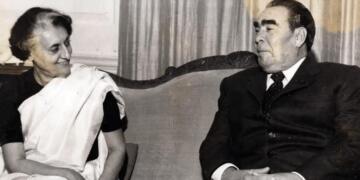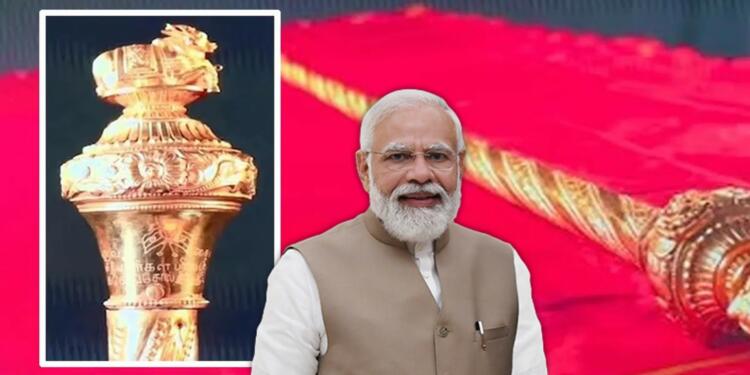The central government’s recent inclusion of the Sengol, a symbol deeply rooted in India’s rich cultural heritage, in the New Parliament has sparked discussions and speculation about PM Modi and his future plans. While there is no doubt that PM Modi is fiercely nationalist, the current decision makes us think: What more does he have to offer?
Let’s analyze the decision of anointing the New Parliament with the much-revered Sengol, and why it has a deep, profound message for the nation. So, what are we waiting for?
Bringing back the Sengol
The inclusion of the Sengol, a ceremonial sceptre, in the New Parliament carries a clear message. Symbolizing leadership, authority, and power, the Sengol or the Rajdand highlights PM Modi’s strong and decisive leadership style. It signifies his commitment to governance and his intention to shape the nation’s future.
While it is undeniable that every leader will step down eventually, PM Modi’s inclusion of the Sengol indicates his desire to retire gracefully and retain control over the timing and manner of his exit. This hints at a desire to be remembered as a respected statesman, akin to an old monarch relinquishing power on his own terms.
The cultural roots of the Sengol
The Sengol holds a deep connection to India’s rich cultural past. It was once an integral part of many kingdoms, including the Cholas and the Marathas. Representing the nation’s collective devotion, the Nandi bull atop the Sengol symbolizes unwavering commitment to serving the masses.
On May 24, HM Amit Shah talked about the historical significance of the sceptre. He said that while the historically significant sceptre was used as a transfer of power in 1947, it vanished after that as it was kept in a museum, and the successive Congress governments and the general public quickly forgot about it. Now the Modi government is reviving the glory of the Sengol by placing it in India’s parliament.
Sengol is a Tamil word, which means full of wealth. When it was decided that the British will hand over power to the Indians, Lord Mountbatten asked Pandit Nehru about the cultural symbol that should be used as a representation of the transfer of power. However, Nehru was also not sure, he sought some time to discuss with others. He discussed the matter with C Rajagopalachari. He studied multiple historic books and informed Jawaharlal Nehru about the Sengol.
The golden sceptre is studded with jewels and was worth about Rs 15000 at that time. Nandi, the bull vahana of Lord Shiva, sits on the top of the sceptre. Nandi is the protector and symbol of justice, said the description given at the press conference. The Sengol is 5 feet long, which is a masterpiece of Indian art with rich workmanship from top to bottom.
Also read: Dear illiterate opposition of India, President is the ‘Head of State’, not ‘Government’!
A Reconnection with Cultural Heritage:
However, post-independence, many institutions and symbols associated with India’s indigenous culture mysteriously vanished. As part of the transfer of power from Lord Mountbatten to Prime Minister Jawaharlal Nehru, the Sengol also disappeared. This loss reflected the erasure of native traditions and symbols under foreign rule, leading to a detachment from India’s local roots.
With the Sengol adorning the Lok Sabha Speaker’s mantelpiece in the New Parliament, Prime Minister Modi has sent a powerful message. It signifies a deliberate effort to reconnect with India’s cultural heritage and restore indigenous symbols to positions of prominence. This move conveys PM Modi’s commitment to preserving and reviving India’s local roots, reinforcing the idea that the New Parliament will not detach itself from the nation’s rich traditions.
Alos Read: NITI Aayog Health Index 2020-21: Kerala, TN, and Telangana Lead, While Delhi Ranks Lowest
Interestingly, inclusion of the Sengol in the New Parliament is likely to evoke varied responses from pro-Dravidian parties, particularly those from Tamil Nadu and beyond. These parties have historically emphasized the preservation of Dravidian culture and identity, though at the cost of the indigenous Sanatana culture of Bharatvarsha. The return of the Sengol might be seen as a step towards recognizing and respecting the diverse cultural fabric of India.
As such, the return of the Sengol signifies a reconnection with India’s rich cultural heritage and a departure from the erasure of indigenous symbols during colonial rule. This move reflects PM Modi’s commitment to preserving and reviving the nation’s local roots, while also potentially influencing the political landscape and eliciting responses from pro-Dravidian parties. As the New Parliament takes shape, the presence of the Sengol serves as a reminder of India’s diverse cultural tapestry and the importance of preserving and celebrating its traditions.
Support TFI:
Support us to strengthen the ‘Right’ ideology of cultural nationalism by purchasing the best quality garments from TFI-STORE.COM




























